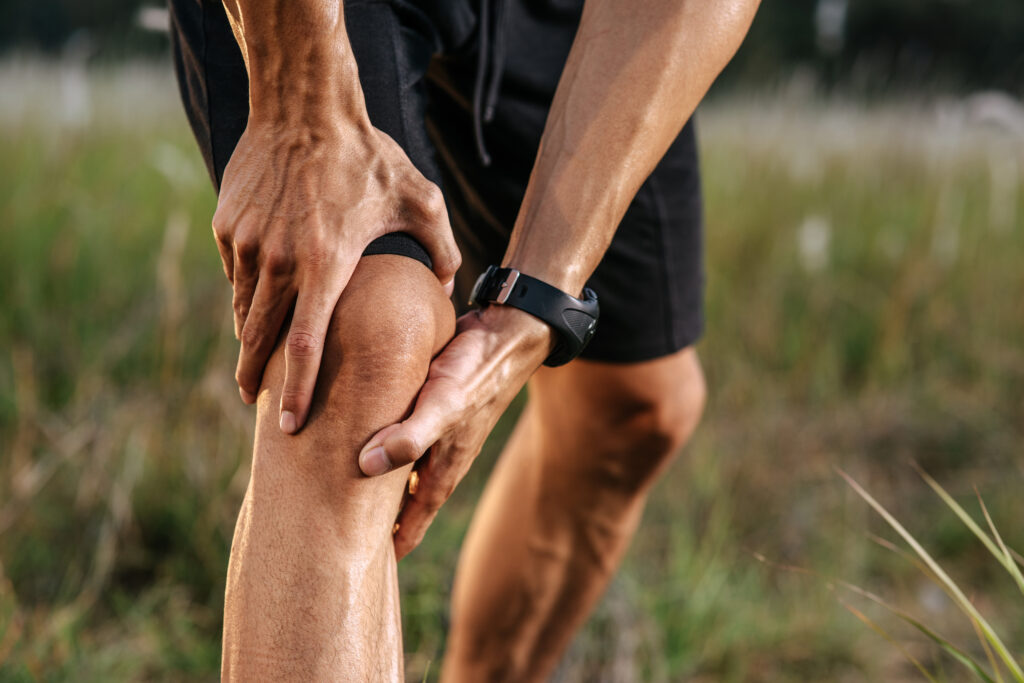When you face a sports injury in Lexington, you might find it challenging to navigate the healing process. Prioritizing rest and implementing effective strategies like ice therapy and compression can greatly impact your recovery. Additionally, focusing on nutrition and personalized physical therapy plays an essential role in regaining strength. You might be surprised by how small adjustments can lead to considerable improvements. So, what are the specific methods that can help you heal faster and return to your favorite activities? Let's explore the seven best ways to make sure you're back in top form.
Rest and Recovery
When it comes to healing sports injuries, you can't overlook the importance of rest and recovery. Your body needs time to heal, and pushing through the pain can lead to more significant setbacks. It's vital to listen to your body and recognize when you need to take a break. Without adequate rest, you risk aggravating the injury, prolonging your recovery time, and possibly leading to chronic issues.
During this recovery phase, prioritize sleep and relaxation. Quality sleep helps your body repair itself, so aim for a consistent sleep schedule. Create a calming nighttime routine to enhance your sleep quality.
Additionally, consider integrating active rest into your recovery. This means engaging in low-impact activities that don't strain your injury but still keep you moving, like walking or gentle stretching.
Nutrition also plays an important role in your recovery. Fuel your body with nutrient-rich foods that support healing, such as lean proteins, fruits, and vegetables. Stay hydrated, as proper hydration aids in muscle recovery and overall bodily functions.
Don't hesitate to consult a healthcare professional for personalized advice. They can guide you on how long you should rest and when it's safe to gradually return to your regular activities.
Ice Therapy
Ice therapy is one of the most effective methods for managing sports injuries, particularly in the initial stages of recovery. When you experience a sprain, strain, or any acute injury, applying ice can greatly reduce swelling and numb the pain. This method is often referred to as R.I.C.E—Rest, Ice, Compression, and Elevation—where ice plays an essential role.
To get the best results, start icing your injury as soon as possible after it occurs. You can use an ice pack, a bag of frozen peas, or even a towel filled with ice cubes. Just make sure to wrap the ice in a cloth to protect your skin from frostbite.
Apply the ice for about 15 to 20 minutes at a time, and then take breaks to avoid over-exposure. You should repeat this process every few hours, especially during the first 48 hours post-injury.
This consistent application helps constrict blood vessels, limiting swelling and inflammation. You might notice that your pain diminishes, allowing you to feel more comfortable while you rest.
Compression Techniques
Compression techniques are essential in managing sports injuries, especially in conjunction with ice therapy. When you apply compression to an injured area, it helps reduce swelling and provides support to the affected tissues. This can greatly speed up your recovery process and allow you to return to your sport sooner.
One of the most common methods of compression involves using elastic bandages or wraps. You'll want to wrap the injured area snugly but not so tight that it restricts blood flow. Start at the farthest point from your heart and work your way up, overlapping the bandage as you go.
Make sure to check for any signs of excessive swelling or numbness, which could indicate that the wrap is too tight.
Another option is compression sleeves or garments, which are designed to provide consistent pressure over the entire area. These can be particularly useful for injuries like sprains or strains. You can wear them during activity or while resting to maintain compression throughout your recovery.
For more severe injuries, a cold compression therapy unit can be highly effective. These devices combine ice and compression, offering both benefits simultaneously. You simply strap the unit onto the injured area and let it work its magic.
Incorporating these compression techniques into your recovery routine can make a noticeable difference. Remember, it's important to combine them with rest and ice therapy for the best results in healing your sports injuries.
Elevation Strategies
Elevating the injured area is a fundamental component of effective recovery from sports injuries. When you elevate the injury above the level of your heart, it helps reduce swelling and improves blood circulation, which can speed up the healing process. This strategy is particularly useful during the first 48 hours following an injury, when inflammation commonly peaks.
To effectively elevate your injury, find a comfortable position where you can support the affected area. Use pillows or cushions to prop it up, ensuring it stays above your heart. If you're dealing with a leg injury, lying on your back with your leg elevated on a stack of pillows can work wonders. For arm injuries, placing your arm on a pillow while sitting or lying down can provide relief and aid recovery.
Make sure to maintain this elevated position for 15 to 30 minutes every hour, especially during the initial days post-injury. It's important to listen to your body; if you feel discomfort or increased pain, adjust your position or reduce the elevation time.
In addition to elevation, consider combining this with compression techniques to further control swelling.
Physical Therapy
When you're recovering from a sports injury, physical therapy can make a big difference.
Your therapist will create a personalized treatment plan tailored to your needs, focusing on strengthening and flexibility exercises.
This targeted approach helps you regain your strength and mobility effectively.
Personalized Treatment Plans
Creating a personalized treatment plan is vital for effectively healing sports injuries. Every athlete's body is unique, and your recovery should reflect that. When you work with a physical therapist, they'll assess your specific injury, medical history, and fitness goals to tailor a program just for you. This individualized approach guarantees that you're not only addressing your current injury but also preventing future ones.
Your treatment plan may include a combination of modalities such as manual therapy, modalities like ultrasound or electrical stimulation, and education on proper body mechanics. By focusing on your specific needs, your therapist can help you regain strength, improve mobility, and enhance your overall performance.
Regular reassessments will also be part of your plan, allowing for adjustments based on your progress. This way, you won't waste time on ineffective treatments, and you'll stay motivated as you see improvements.
Strengthening and Flexibility Exercises
Incorporating strengthening and flexibility exercises into your rehabilitation plan is essential for recovering from sports injuries. These exercises not only promote healing but also help prevent future injuries by improving your overall physical condition.
Start with gentle stretches to enhance your range of motion and gradually work your way to more intense strengthening activities. Focus on specific muscle groups that support the injured area. For example, if you've hurt your ankle, incorporate exercises that strengthen your calf and foot muscles.
Resistance bands, light weights, or even bodyweight exercises can be effective. Aim for a balanced routine that targets both strength and flexibility, ensuring you're building stability as you heal.
Don't forget to listen to your body. If an exercise causes pain, modify it or consult your physical therapist for alternatives. Consistency is key, so set aside time each day for your exercises.
Over time, you'll notice improvements in strength, mobility, and confidence in your movements. By dedicating yourself to these exercises, you'll not only recover faster but also return to your sport stronger than before.
Nutrition and Hydration
How can proper nutrition and hydration speed up your recovery from sports injuries? The food you eat and how well you hydrate can make a significant difference in your healing process. When you sustain an injury, your body requires essential nutrients to repair damaged tissues and reduce inflammation.
Focus on consuming a balanced diet rich in proteins, vitamins, and minerals. Proteins are important for muscle repair and recovery, so include sources like lean meats, fish, eggs, and legumes in your meals. Vitamins C and D are essential for collagen synthesis and bone health, respectively. Incorporate fruits and vegetables, such as oranges, berries, and leafy greens, to get these nutrients.
Don't forget about healthy fats! Omega-3 fatty acids, found in fatty fish and walnuts, can help reduce inflammation and support joint health.
Staying hydrated is equally important. Water aids in nutrient transportation and keeps your joints lubricated. Drink enough fluids throughout the day, especially if you're engaging in physical therapy or light exercises.
Limit processed foods, added sugars, and excessive sodium, as these can lead to inflammation and slow down your recovery. Instead, opt for whole foods that nourish your body and promote healing.
Gradual Return to Activity
After a sports injury, it's crucial to ease back into activity gradually. Rushing the process can lead to re-injury or setbacks that prolong your recovery. Start by listening to your body and consulting with a healthcare professional to create a plan tailored to your needs.
Begin with low-impact activities that won't strain your injury. This helps maintain your fitness level while allowing your body to heal.
Here are some key points to reflect on as you shift back to your regular routine:
- Listen to Your Body: Pay attention to any pain or discomfort. If something doesn't feel right, stop and reassess.
- Increase Intensity Slowly: Start with short sessions and gradually increase duration and intensity as your strength improves. This can help prevent overexertion.
- Incorporate Stretching and Strengthening: Focus on exercises that enhance flexibility and strength in the affected area. This will support your recovery and reduce the risk of future injuries.
As you progress, incorporate sport-specific drills and activities back into your routine.
Keep track of your improvements and setbacks, and don't hesitate to adjust your plan as needed.
Conclusion
To summarize, healing from sports injuries in Lexington requires a balanced approach. Prioritizing rest, utilizing ice and compression, and elevating the injured area are essential practices. Don't forget the importance of personalized physical therapy and a nutritious diet to support your recovery. Stay hydrated and keep track of your progress with healthcare professionals. By following these seven strategies, you'll be well on your way to regaining your strength and confidence, ready to get back in the game!



